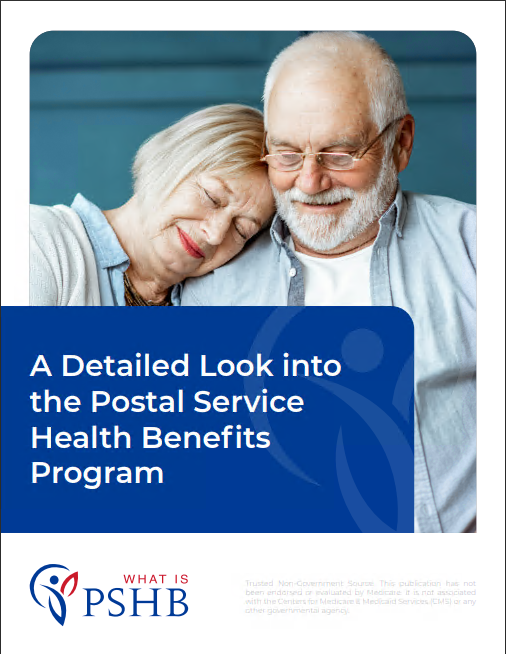Medicare Costs and PSHB: Understanding Healthcare Expenses
Navigating healthcare costs can be daunting, especially for postal service employees and retirees considering Medicare alongside the Postal Service Health Benefits (PSHB) program. Understanding the intricacies of healthcare expenses associated with Medicare and PSHB is essential for making informed decisions about coverage and managing costs effectively. In this article, we’ll delve deeper into Medicare costs, PSHB premiums, out-of-pocket expenses, and how these programs intersect to provide comprehensive coverage for postal professionals.
Medicare Costs
Part A Premiums:
Medicare Part A, also known as hospital insurance, typically doesn’t require a premium for individuals whose spouses have paid Medicare taxes while working. This premium-free Part A coverage is a benefit earned through years of payroll contributions to the Medicare system. However, if a beneficiary doesn’t have sufficient work history to qualify for premium-free Part A coverage, they may be required to pay a monthly premium.
Part B Premiums:
Medicare Part B, which covers medical services like doctor visits and outpatient care, does require a monthly premium. The standard Part B premium is adjusted annually based on income, with higher-income beneficiaries paying a higher premium through an income-related monthly adjustment amount (IRMAA). Understanding how income affects Part B premiums is crucial for budgeting healthcare expenses.
Deductibles and Coinsurance:
In addition to monthly premiums, Medicare Part A and Part B have deductibles and coinsurance amounts that beneficiaries are responsible for paying out of pocket. For example, Medicare Part A has a deductible for inpatient hospital stays, while Part B has an annual deductible and coinsurance for covered services. These out-of-pocket costs can increase, particularly for beneficiaries requiring frequent medical care.
Part D Premiums and Drug Costs:
Medicare Part D, which provides prescription drug coverage, is offered by private insurance companies approved by Medicare. Part D plans have monthly premiums that vary depending on the plan selected. Beneficiaries may also incur out-of-pocket costs such as deductibles, coinsurance, and copayments for prescription medications, depending on the specific Part D plan’s formulary and coverage tiers.
Medigap Premiums:
For beneficiaries who choose to enroll in a Medicare Supplement plan (Medigap), there are additional monthly premiums to consider. Medigap plans help fill the gaps in Medicare coverage by paying for certain out-of-pocket costs such as deductibles, coinsurance, and copayments. Medigap premiums vary depending on the plan selected, the beneficiary’s age, and other factors.
PSHB Premiums and Out-of-Pocket Costs
Premiums:
The Postal Service Health Benefits (PSHB) program, designed specifically for postal service employees and retirees, also comes with its own set of premiums and out-of-pocket costs. PSHB premiums are determined by the United States Postal Service (USPS). They may vary depending on factors such as plan selection, coverage level, and whether the individual is an active employee or retiree. These premiums are typically deducted from postal employees’ paychecks for active employees or directly billed to retirees.
Deductibles and Copayments:
In addition to premiums, PSHB plans may include deductibles, copayments, and coinsurance amounts that postal employees and retirees are responsible for paying out of pocket for covered services. These costs can vary depending on the specific plan and services received. Understanding the structure of deductibles and copayments within PSHB plans is essential for effectively budgeting healthcare expenses.
Supplemental Insurance Options:
Some postal employees and retirees may enroll in supplemental insurance options, such as Medigap or Medicare Advantage plans, to help cover Medicare deductibles, coinsurance, and copayments. Supplemental insurance premiums vary depending on the plan selected, the beneficiary’s age, and other factors. Exploring supplemental insurance options can provide additional financial protection and peace of mind.
Comparing Medicare and PSHB Costs
Premiums:
While Medicare Part A premiums are often premium-free for most beneficiaries, Part B, Part D, and Medigap premiums contribute to overall healthcare costs. PSHB premiums, on the other hand, are determined by USPS and may vary depending on plan selection and coverage level. Comparing premiums between Medicare and PSHB can help beneficiaries assess their healthcare budget and choose the most cost-effective coverage options.
Out-of-Pocket Expenses:
Both Medicare and PSHB plans have out-of-pocket expenses such as deductibles, copayments, and coinsurance amounts. Understanding how these costs vary between Medicare and PSHB plans is crucial for budgeting healthcare expenses and planning for future medical needs. Beneficiaries should carefully review the cost-sharing requirements of each plan to determine which option best meets their healthcare needs and financial situation.
Coordination of Benefits:
Understanding how Medicare and PSHB coordinate benefits is essential for managing healthcare costs effectively. Depending on individual circumstances, beneficiaries may use Medicare as their primary coverage and PSHB as secondary coverage, or vice versa, to minimize out-of-pocket expenses. Coordinating benefits between Medicare and PSHB can help beneficiaries maximize coverage while reducing costs.
Conclusion
Navigating healthcare costs for postal service employees and retirees requires careful consideration of Medicare and PSHB expenses. By understanding the costs associated with each program, beneficiaries can make informed decisions about coverage and manage expenses effectively. Whether comparing premiums, deductibles, or out-of-pocket costs, postal professionals can ensure comprehensive coverage while minimizing financial strain. Exploring supplemental insurance options and understanding how Medicare and PSHB coordinate benefits can provide additional financial protection and peace of mind.
Ready to learn more about Medicare costs and PSHB expenses? Explore our resources and discover how to manage healthcare expenses effectively as a postal service employee or retiree.
Stay tuned for more informative content on retirement planning and healthcare benefits for postal service employees.
Featured Articles
As seniors navigate the healthcare landscape,
As seniors navigate the healthcare landscape,
As seniors navigate the healthcare landscape,
Licensed agents are available to help you find the best Medicare plan for you.
Working with a licensed agent can simplify your PSHB & Medicare experience.
Feedback For What Is PSHB
Let us know what you think!








